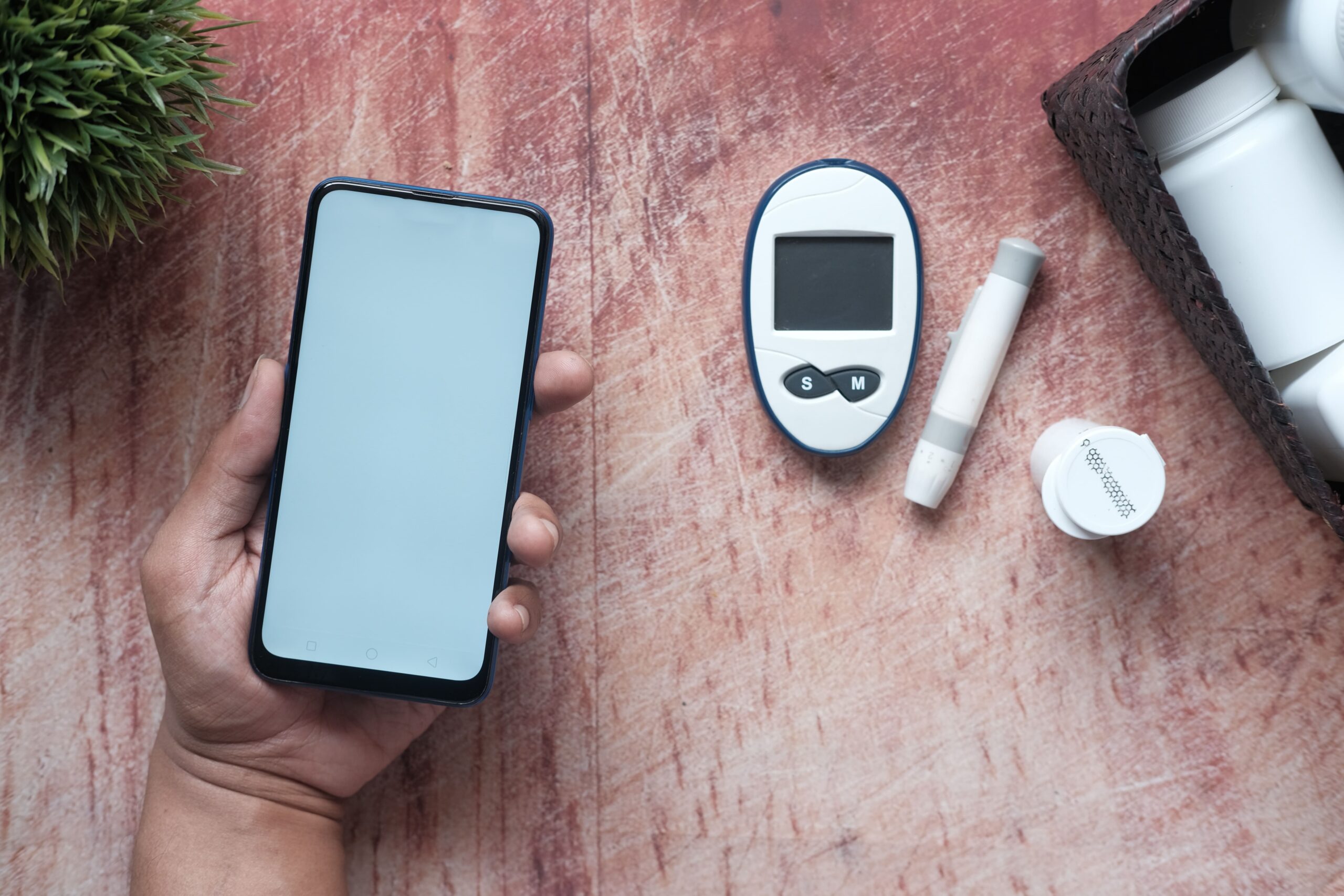In today’s digital age, the role of technology in governance has become increasingly crucial. Government devices significantly facilitate efficient and effective governance as part of this technological landscape. These devices encompass a wide range of technological tools, including computers, networking equipment, mobile devices, and specialized software, which government entities utilize to streamline administrative processes and provide public services to citizens.
Definition and Significance of Government Devices
Government devices refer to the technical communications tools and infrastructure government agencies and entities use to carry out their functions and responsibilities. These devices enable the implementation of e-government, also known as electronic government, which involves using technology, particularly computers and the Internet, to deliver public services, enhance transparency, and improve governance.
The significance of government devices lies in their ability to transform traditional bureaucratic systems into efficient, transparent, and accessible digital platforms. By leveraging technology, governments can streamline administrative processes, reduce paperwork, and increase the speed and accuracy of service delivery. Government devices are pivotal in enabling citizens to interact with government agencies, access information and services online, and participate in decision-making.
Importance of Technology in Modern Governance
Technology has revolutionized how governments operate, bringing about numerous benefits and advancements in modern governance. Here are some key reasons highlighting the importance of technology in governance:
- Enhanced Efficiency: Government devices automate routine tasks, allowing public servants to allocate more time and resources to critical areas. This streamlines administrative processes, reduces redundancies and improves the overall efficiency of government operations.
- Improved Service Delivery: Technology enables governments to provide citizen-centric services promptly and effectively. Through online portals, mobile applications, and digital platforms, citizens can access information, submit applications, and receive services conveniently, saving time and effort.
- Transparency and Accountability: Technology promotes transparency by providing real-time access to government information, policies, and decisions. Digital platforms facilitate open data initiatives, making government data available to the public for scrutiny, analysis, and participation.
- Data-Driven Decision Making: Government devices enable collecting, analyzing, and interpreting large volumes of data. This data-driven approach helps governments make informed decisions, develop evidence-based policies, and monitor outcomes for effective governance.
- Citizen Engagement and Participation: Technology empowers citizens to engage with their governments, express opinions, and participate in decision-making processes. Online forums, social media platforms, and e-consultations enable governments to gather public feedback and incorporate it into policy-making.
- Cybersecurity and Data Protection: With the increasing digitization of government processes, ensuring the security and protection of sensitive data becomes paramount. Government devices incorporate robust security measures to safeguard citizen data, prevent cyber threats, and maintain privacy.

Definition and Overview of E-Government:
It involves digitalizing government processes, enabling citizens to access information, interact with government agencies, and engage in online transactions conveniently.
Role of Technological Communications Devices in E-Government:
Technological communications devices play a pivotal role in the implementation of e-government initiatives. These devices provide the necessary infrastructure and tools for governments to digitize their services, streamline administrative processes, and improve the accessibility and efficiency of public service delivery. Computers, mobile devices, networking equipment, and software applications enable governments to create online platforms, portals, and databases that facilitate communication, data exchange, and service provision.
Benefits of E-Government for Citizens and Governments:
E-government offers several benefits for both citizens and governments:
- Enhanced Accessibility: E-government platforms provide citizens with round-the-clock access to government services and information, eliminating the constraints of traditional office hours and physical locations. Citizens can conveniently interact with government agencies, access documents, and complete transactions online.
- Time and Cost Savings: E-government reduces the need for citizens to visit government offices in person, saving time and transportation costs. It also reduces administrative burdens for government officials by automating processes, thereby increasing operational efficiency and reducing paperwork.
- Improved Service Delivery: By leveraging technological devices, governments can deliver services more efficiently and effectively. Online portals enable citizens to apply for permits, licenses, and benefits, track the progress of their applications, and receive notifications, resulting in faster and more transparent service delivery.
- Transparency and Accountability: E-government promotes transparency by making government information, policies, and decisions easily accessible to the public. Citizens can access and monitor government activities, budgets, and public procurement processes, fostering trust and accountability.
- Citizen Engagement and Participation: Technological devices facilitate citizen engagement in governance. E-government platforms provide channels for citizens to voice their opinions, participate in online consultations, and contribute to policy-making, promoting inclusive and participatory governance.
Examples of Government Devices Used in E-Government Initiatives:
Various government devices are utilized in e-government initiatives worldwide. These include:
– Computers and Laptops: Governments deploy desktop and laptop computers for administrative tasks, data management, and service provision. These devices serve as workstations for government officials to access and process information.
– Mobile Devices: With the rise of mobile technology, governments leverage smartphones and tablets to deliver services through mobile applications. Citizens can access government services, receive notifications, and submit forms conveniently using mobile devices.
– Networking Equipment: Networking devices such as routers, switches, and servers are employed to establish secure and efficient communication networks within government offices. These devices enable the seamless exchange of data and information between government departments.
– Software Applications: Governments utilize various software applications, including customer relationship management systems, document management systems, and online portals, to streamline processes, manage data, and deliver services online.
– Biometric Devices: In some e-government initiatives, biometric devices such as fingerprint scanners or facial recognition systems are employed for secure identification and authentication, ensuring citizen data’s integrity and privacy.
Government devices play a critical role in enabling e-government, delivering benefits such as improved accessibility, efficiency, transparency, and citizen engagement. Governments worldwide continue to invest in and expand their use of technological communications devices to enhance public service delivery and transform governance in the digital age.
Government Infrastructure and ICT :
Introduction to GovTech and the Government Infrastructure Group (GIG):
GovTech, short for Government Technology Agency, is an organization that focuses on using technology to transform and improve government services in Singapore. It is responsible for driving digital transformation initiatives and developing the necessary technological infrastructure to support the whole-of-government (WOG) efforts. Within GovTech, the Government Infrastructure Group (GIG) specifically focuses on developing the Info-communications Technology Infrastructure (ICT Infra) for government agencies.
Centralized ICT Infrastructure Development for the Whole of Government (WOG):
The Government Infrastructure Group (GIG) works towards establishing a centralized ICT infrastructure that caters to the needs of the entire government ecosystem. This approach ensures interoperability, efficiency, and cost-effectiveness across government agencies. The government aims to streamline operations, eliminate duplications, and foster collaboration among agencies by developing shared ICT infrastructure.
Components and Systems Comprising Government Devices in ICT Infrastructure:
Government devices within the ICT infrastructure consist of various components and systems that support the smooth functioning of government operations. These include:
- Servers and Data Centers: Government agencies rely on servers and data centers to securely store and process vast amounts of data. These components form the backbone of the ICT infrastructure and ensure the availability and accessibility of critical government information.
- Networking Equipment: Networking devices such as routers, switches, and firewalls enable seamless communication and data exchange between government agencies. They facilitate the establishment of secure and reliable networks within the government ecosystem.
- Storage Devices: Government devices encompass storage solutions such as storage area networks (SAN) and network-attached storage (NAS). These devices provide scalable and reliable storage capacity for government data, ensuring data integrity and availability.
- Software Solutions: Government devices include various software applications, including enterprise resource planning (ERP) systems, content management systems (CMS), and collaboration tools. These software solutions enable efficient data management, document sharing, and collaboration among government agencies.
- Security Infrastructure: Reliable and secure government devices encompass security systems and protocols to safeguard sensitive government data. This includes firewalls, intrusion detection systems (IDS), encryption technologies, and access control mechanisms, ensuring the protection of information assets.
Importance of Reliable and Secure Government Devices in Supporting Governance:
Reliable and secure government devices are vital in supporting effective governance for several reasons:
- Operational Continuity: Government agencies heavily rely on ICT infrastructure and devices for uninterrupted operations. Reliable devices ensure minimal downtime, preventing disruptions in service delivery and maintaining public trust in government services.
- Data Integrity and Privacy: Government devices play a crucial role in ensuring the integrity and privacy of sensitive data. Robust security measures and protocols protect government information from unauthorized access, breaches, and cyber threats, maintaining confidentiality and building trust with citizens.
- Interoperability and Collaboration: Centralized ICT infrastructure, enabled by government devices, promote interoperability and seamless communication between government agencies. This facilitates information sharing, collaborative decision-making, and coordinated efforts to address complex societal challenges.
- Cost Efficiency: By centralizing ICT infrastructure and leveraging reliable government devices, governments can achieve cost savings through economies of scale, streamlined procurement processes, and optimized resource allocation. This allows for better utilization of taxpayer funds and increased efficiency in government operations.
- Citizen Trust and Engagement: When citizens have confidence in the reliability and security of government devices, they are more likely to engage with e-government services, provide feedback, and participate in the governance process. Secure government devices are essential for building trust, encouraging citizen engagement, and fostering a positive digital experience.
In summary, the Government Infrastructure Group (GIG) plays a crucial role in developing the centralized ICT infrastructure for Singapore’s whole government (WOG). Government devices within this infrastructure encompass components such as servers,
networking equipment, storage devices, and software applications. Reliable and secure government devices support efficient governance, ensuring operational continuity, data security, collaboration, and citizen trust in government services.
III. The Digital Future of Government :
Transformative Effects of Government Digital Strategies:
Government digital strategies have the potential to bring about transformative changes in governance. By harnessing the power of technology and digital solutions, governments can:
- Improve Efficiency and Productivity: Digital strategies enable streamlined processes, automation of routine tasks, and efficient data management. This increases the productivity of public servants, allowing them to focus on more value-added activities and deliver services more effectively.
- Enhance Service Delivery: Digital platforms and government devices enable the delivery of services in a more accessible, convenient, and citizen-centric manner. Citizens can access services online, track the progress of their applications, and receive notifications, resulting in faster and more personalized service delivery.
- Foster Transparency and Accountability: Digital solutions facilitate transparency by making government information and processes more accessible to the public. Open data initiatives, digital portals, and online dashboards allow citizens to monitor government activities, budgets, and performance, promoting accountability and trust.
Adoption of Convenient and Highly Secure Devices for Public Servants:
In the digital future of government, public servants need access to convenient and highly secure devices to carry out their roles effectively. These devices should offer the following:
- Mobility and Flexibility: Government officials often need to work remotely or on the go. Mobile devices, such as smartphones and tablets, equipped with productivity tools and secure access to government systems, enable public servants to remain connected and perform their duties from anywhere.
- Robust Security Features: Highly secure devices are essential as governments handle sensitive data and face cybersecurity threats. These devices should have advanced encryption, secure authentication methods, and built-in security features to protect government information and mitigate risks.
Enhancing Service Delivery through Advanced Government Devices:
Advanced government devices play a significant role in improving service delivery. They enable:
- Seamless Interaction with Citizens: Government devices facilitate citizen engagement through various channels, such as online portals, mobile applications, and chatbots. These devices enable citizens to access information, submit applications, and receive real-time assistance, enhancing the overall citizen experience.
- Personalized Services: With the aid of advanced government devices, personalized services can be delivered based on citizen preferences and historical data. This leads to more tailored and efficient service delivery, meeting the unique needs of citizens.
Case Study: Samsung’s Galaxy S21 Ultra 5G Enterprise Edition for Government Use:
Samsung’s Galaxy S21 Ultra 5G Enterprise Edition is an example of a device designed specifically for government use. This device offers several features that support government operations:
- Enhanced Security: The Galaxy S21 Ultra 5G Enterprise Edition incorporates advanced security features, such as Knox Platform, secure boot, and secure folder, to protect government data and ensure device integrity.
- Seamless Connectivity: With 5G capabilities, the device enables high-speed and reliable connectivity, ensuring public servants can access critical information and collaborate effectively.
- Productivity and Collaboration Tools: The Galaxy S21 Ultra 5G Enterprise Edition comes pre-loaded with various productivity tools and applications, empowering public servants to work efficiently and collaborate seamlessly.
- Device Management: Samsung’s Enterprise Edition devices offer comprehensive device management solutions, allowing IT administrators to control and manage devices remotely, ensuring compliance and security.
The adoption of advanced government devices, such as the Galaxy S21 Ultra 5G Enterprise Edition, exemplifies how technology can drive the digital future of government, improving service delivery, enhancing security, and enabling efficient governance.
In conclusion, the digital future of government holds transformative potential. Government digital strategies can revolutionize governance, and adopting convenient and highly secure devices for public servants is essential. Advanced government devices, like the Galaxy S21 Ultra 5G Enterprise Edition, enhance service delivery and empower public servants to carry out their responsibilities effectively in the digital age.
- The Role of Government Devices :
Government devices play a crucial role in modern governance by enabling streamlined administrative processes, promoting transparency and accessibility to government services, ensuring the security and privacy of sensitive government data, and supporting efficient communication and productivity among public servants. Let’s explore these roles in more detail:
- Streamlining Administrative Processes through Technology:
Government devices, such as computers, laptops, and software applications, streamline administrative processes by automating tasks, reducing paperwork, and improving workflow efficiency. These devices enable digital record-keeping, electronic document management, and streamlined communication, leading to faster decision-making and improved operational effectiveness within government agencies.
- Promoting Transparency and Accessibility to Government Services:
Government devices, including online portals, mobile applications, and self-service kiosks, promote transparency and accessibility to government services. Citizens can access information, submit applications, and track the progress of their requests easily. Government devices enable the digitization of public services, allowing citizens to engage with government agencies conveniently, regardless of geographical location and office hours.
- Ensuring the Security and Privacy of Sensitive Government Data:
Government devices play a critical role in ensuring the security and privacy of sensitive government data. Robust security features, such as encryption, secure authentication methods, and secure access controls, are incorporated into government devices to protect against unauthorized access, data breaches, and cyber threats. These measures safeguard citizen data, confidential government information, and critical infrastructure from potential risks, maintaining public trust in government services.
- Supporting Efficient Communication and Productivity among Public Servants:
Government devices facilitate efficient communication and collaboration among public servants, enhancing productivity and enabling effective teamwork. Email systems, instant messaging platforms, video conferencing tools, and collaborative workspaces are government devices supporting seamless communication and knowledge sharing. These devices enable public servants to access and share information, collaborate on projects, and make informed decisions, fostering a more connected and productive government workforce.
In summary, government devices play a multifaceted role in modern governance. They streamline administrative processes, promote transparency and accessibility to government services, ensure the security and privacy of sensitive government data, and support efficient communication and productivity among public servants. As technology advances, government devices will continue to evolve, driving digital transformation and enhancing the delivery of public services in the years to come.
Conclusion :
In conclusion, government devices play a crucial and multifaceted role in modern governance. They are instrumental in streamlining administrative processes, promoting transparency and accessibility to government services, ensuring the security and privacy of sensitive government data, and supporting efficient communication and productivity among public servants.
The importance of government devices lies in their ability to harness technology to improve governance. By leveraging these devices, governments can enhance service delivery, increase operational efficiency, and foster citizen engagement. Government devices enable the digitization of public services, allowing citizens to access information and interact with government agencies conveniently.
Furthermore, the ongoing digital transformation in governance highlights the increasing reliance on technology and government devices. Governments worldwide embrace digital strategies to improve efficiency, enhance citizen experience, and drive innovation. Integrating government devices into the fabric of governance enables governments to adapt to the rapidly evolving technological landscape and meet the changing needs of citizens.
Looking ahead, we can expect further advancements in government devices and technology. As technology evolves, governments will adopt more advanced devices with enhanced security features, improved connectivity, and increased processing power. The future will likely see the integration of emerging technologies such as artificial intelligence, blockchain, and the Internet of Things (IoT) into government devices, further revolutionizing governance processes.
The role of government devices will continue to expand, enabling governments to provide citizen-centric services, make data-driven decisions, and foster collaboration among various government agencies. As governments embrace digital transformation, using advanced government devices will be instrumental in shaping the future of governance.
In summary, government devices are pivotal in modern governance by streamlining administrative processes, promoting transparency and accessibility, ensuring data security, and supporting efficient communication among public servants. The ongoing digital transformation and future advancements in government devices and technology will continue to drive innovation and improve governance for the benefit of citizens and governments alike.








